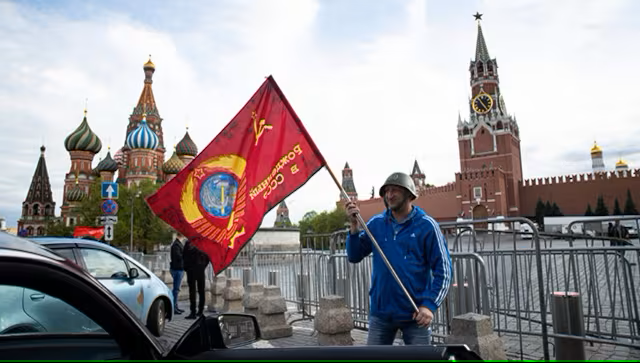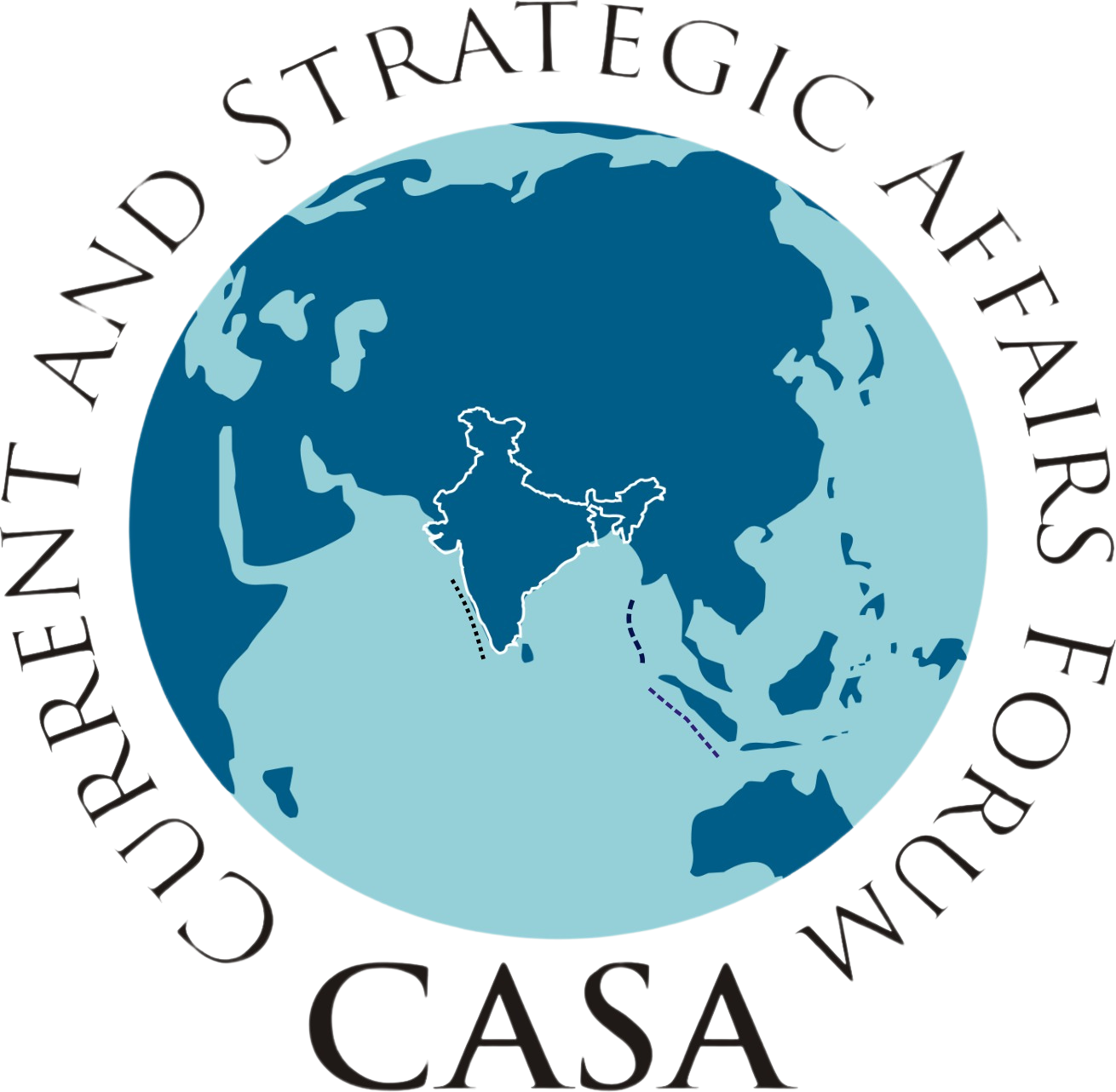How Ukraine is at the centre of Russian history
- May 4, 2023
- Posted by: admin
- Categories: Russia, Ukraine

In the annals of time, there is no doubt that the people of Ukraine have suffered as victims of war, deprivation, lost history andcountless invasions from all sides
Ukrainians are at the heart of Russian history. They are the famed Cossacks and the noblest of Eastern Slavic families. Ukrainians were also top rulers of the Soviet Republic. Nikita Khrushchev was born in Kalinovka, a village in what is now Russia’s Kursk Oblast, near the present Ukrainian border but was raised in Eastern Ukraine. In time, Khrushchev became the head of the Ukrainian Soviet Socialist Republic. After Joseph Stalin’s death, he led the Soviet Union between 1953 and 1964.
While Khrushchev was ethnically Russian, but he was Ukrainian in many ways. “In 1954, the Crimean Region of the RSFSR was given to the Ukrainian SSR, in gross violation of legal norms that were in force at the time,” Putin said of Khrushchev’s act, which the latter described as a “symbolic gesture”.
Leonid Brezhnev hailed from Kamianske, a city in Central Ukraine on the Dnieper River. He ruled the Soviet Union between 1964 and 1982, the second longest-reigning Communist leader of the state after Stalin who incidentally was born in Georgia.
Konstantin Chernenko was another Ukrainian, who also reached the upper echelons of Soviet power. Though born in Siberia, he was Ukrainian by descent. He led the state for a brief period from 1984 to 1985. Mikhail Gorbachev, the last Soviet leader, was half-Ukrainian. His maternal family had Ukrainian descent and migrated from Chernihiv, a city in Northern Ukraine, he succeeded Chernenko as the General Secretary of the Soviet Communist Party. Gorbachev established the office of the President of the Soviet Union in 1990. He was the first and the last President of the Soviet Union, overseeing its dissolution. He ruled the Soviet Union from 1985 to 1991.
From Stalin’s death in 1953 to the disintegration of the USSR in 1991, the Soviet Union was led by Ukrainians for 31 of those 38 years. Clearly, Ukraine punched above its weight when it came to political influence within the Soviet Union.
To understand the war in Ukraine, a necessary starting point is to look at the centuries-old relationship between Ukraine and Russia. It’s in Kyiv where one of the holiest places stands: the great Medieval-era Saint Sophia Cathedral, currently a museum, was built under the reign of the most revered rulers of Kievan Rus, Vladimir the Great, originally a follower of Slavic paganism, Vladimir converted to Christianity in 988 and Christianized Kievan Rus’. This along with other landmark shrines in Kyiv, is religiously significant to both Ukrainian Orthodox and Russian Orthodox. It was in Kyiv in this period that Christianity was brought from Byzantium to the Slavic people.You May LikeEvery Indian Should Get This Incredible Rs.1999 SmartwatchGenFitLearn More by Taboola Sponsored Links
The birth of Kievan Rus – central to Russian, Ukrainian and Belarusian history – came in tandem with other great kingdoms moulded into shape by Vikings, also known as Normans or Norsemen in Europe.
Following the fall of the Roman Empire, Norman warriors became some of Europe’s most able and trusted fighters and rulers; in the short span of a century, they founded flourishing kingdoms in France, England, Southern Italy and also in Kyiv.
They cherished the idea of reconstituting the peace and prosperity enjoyed under the Roman Empire. Norsemen solidified their footing in the 9th century, travelling on large wooden river boats, conquering as they went farther South. On the banks of the Dnipro River, they founded what is now Kyiv, the jewel of early East Slavic history. The modern nations of Belarus, Russia, and Ukraine all claim Kievan Rus’ as their lineage with Belarus and Russia deriving their names from it.
The State eventually disintegrated into rival regional powers and was ultimately destroyed by the Mongol invasions of the 13th century. The area was then contested, divided, and ruled by a variety of external powers for the next 600 years, including the Polish–Lithuanian Commonwealth, the Austrian Empire, the Ottoman Empire, and the Tsardom of Russia.
The Cossack Hetmanate emerged in central Ukraine in the 17th century but was partitioned between Russia and Poland, and ultimately absorbed by the Russian Empire.
From the steppes of Ukraine, the Cossacks helped turn Moscow into a great European power. Their grit and fighting spirit were legendary and the fighting spirit being demonstrated by the Ukrainians can possibly be traced back to their Cossack past.
The Cossacks were tough people who had mastered the art of horseback fighting. Theirs was a multi-ethnic, semi-nomadic, anarchic and democratic society that emerged in the late Medieval period; in a loose semi-democratic military federation, they ran affairs on the Ukrainian plains for centuries.
They were early followers of the East Slavic Christian Orthodox faith and withstood assaults from both the Russian and Turkish empires, each vying for control of the Black Sea.
Today the Black Sea is back in focus as one of the principal reasons for the Russian invasion of Ukraine is control of the Black Sea. Russia‘s Black Sea fleet remains harboured in Sevastopol in Crimea. Russia’s expansion on the Black Sea was beneficial to the Russians as they developed Ukraine’s warm-water ports, and gained access to the booming world trade in the Mediterranean Sea.
The lands surrounding the Black Sea have for centuries been a crossroads of Empires, voyagers, diseases, wars and revolutions. It was on the Eastern shores of the Black Sea in present-day Turkey that Marco Polo launched his great overland voyage to Cathay. The Bubonic plague also known as Black Death arrived in Europe via Crimea.
Over the course of Moscow’s imperial expansion, the Cossacks entered into alliances with the Tsars of Moscow and provided crucial military strength: They fought on the side of the Kremlin in the Great Northern War, the Seven Years’ War, the Crimean War, the Napoleonic Wars, the Caucasus War and in the many Russo-Persian Wars and Russo-Turkish Wars becoming the backbone –of the Russian Empire.
In Kyiv, a granite stele commemorates the Pereyaslav Council of 1654, at which the Hetman Bohdan Khmelnytsky and other leaders of the autonomous Cossack Hetmanate pledged allegiance to Russia in exchange for protection against the Polish-Lithuanian Commonwealth – leading to the eventual Russification of the region that is now Ukraine
In the late 1700s, they fought for Russian Empress Catherine II and it was largely to their military prowess that Moscow was able to push back the Ottomans from Crimea and Ukraine.
Catherine the Great was indebted to the Cossacks and bestowed them with favours, wealth and noble titles and they played a major role in turning large but land-locked Russia into a European power.
But in Ukraine, Catherine’s legacy is mixed and a source of deep division. Catherine sent the Russian General Peter Tekeli to disband the Zaporozhian Sich, a semi-autonomous and republican-style government in Southern Ukraine run by Cossack Chiefs. Russian forces surrounded the Sich in May 1775, forced its surrender and razed what buildings they had to the ground.
With the sacking of the Sich, Catherine renamed Southern and Eastern Ukraine “Novorossiya,” or New Russia. After the 1783 Russian annexation of Crimea from the Ottoman Empire and liquidation of the Cossack Zaporozhian Sich, Grigory Potemkin a nobleman became governor of the region. Crimea had been devastated by the war, and the Muslim Tatar inhabitants of Crimea were viewed as a potential fifth column of the Ottoman Empire.
Potemkin’s major tasks were to pacify and rebuild by bringing in Russian settlers. In 1787, as a new war was about to break out between Russia and the Ottoman Empire. Catherine II, with her court and several ambassadors, made an unprecedented six-month trip to New Russia. Famously, Grigory Potemkin, brought the Queen by river boat to see her new possessions, an episode best remembered as Catherine’s “Potemkin village” trip.
The destruction of the Sich led to Ukrainian resentment against the Tsars and in time an important narrative about why Ukraine needed to become independent again from Russia. During the spread of Ukrainian nationalism in the 19th century, references to the sacking of the Sich were a rallying call.
Going back in history, the word “Ukraine” first appeared in 1187 AD, upon the death of Volodymyr Hlibovych, a great ruler of the Principality of Pereyaslavl in the South Eastern extreme of the Kievan Rus dynasty.
During the Russian Revolution, an independent Ukrainian Republic briefly survived before it was crushed by the Bolsheviks. To allay the seething anger raging across so many regions of the now-decapitated Russian Empire, the Bolsheviks created new “Soviet republics” roughly corresponding to regional, ethnic and geographic boundaries. Thus, the borders of Ukraine were formalized. Ukraine, then, became a semi-state within the Soviet universe in 1922.
During World War II, Hitler invaded Ukraine and millions were killed in his bid to possess the Black Sea, Ukraine’s fertile wheat fields and the untold riches farther East. In fact, in Babyn Yar, a ravine in Kyiv, more than 33,000 Jews were killed within 48 hours in 1941 when the city was under Nazi occupation in one of the largest mass killings at a single location during World War II. Napoleon Bonaparte had made a similar attempt more than 200 years before, though he invaded Russia with an eye to joining forces with Ukraine’s anti-Tsarist population, still fuming over the destruction of the Sich.
The Soviet years saw Ukraine transformed from a once wild and unspoiled steppe into an industrial heartland. Under Stalin’s Soviet rule, Ukraine became the industrial engine as well as an environmental wasteland with the Chernobyl nuclear disaster topping them all.
Ukraine was a powerhouse among the Union of Soviet Socialist Republics: Many of the Soviet’s biggest dams, highways, government complexes, factories, mines, oil refineries, chemical plants, ships and space rocket facilities came up in Ukraine. However, this was also marked by one of Ukraine’s worst tragedies, the Holomodor or ‘death by hunger’.
In the drive to quickly industrialise and modernise, Stalin oversaw mass starvation across the Soviet Union. The famine of the early 1930s hit Ukraine particularly hard. To most it remains a consequence of human made factors which included the collectivisation of agriculture. Anne Applebaum, in her book “Red Famine: Stalin’s War on Ukraine,” states “It’s a piece of history, and it’s remembered by Ukrainians as an attempt to eradicate them”.
In the annals of time, there is no doubt that the people of Ukraine have suffered. Victims of war, deprivation, lost history. Ukraine, has been a victim of countless invasions from all sides, the North, the South, the West and the East: Mongols, Swedes, Lithuanians, Poles, French and Germans have all invaded this land.
In 1991 they obtained their independence as a Republic with the dissolution of the USSR. Yet, since gaining independence, the past 30 years have seen the country continue to suffer with the decline of 10 million people, a flat economic curve and endemic corruption.
In understanding this war, it seems wise therefore to reflect on its history. History which is now repeating itself as has happened so many times before, Ukrainians are born in a land crossed by empires. The struggle over control of Mackinder’s “Heartland” and Russia’s need to reclaim control over Ukraine, is now resulting in Europe’s worst war since World War II, where the conflict is raging without an end in sight. Yet, for as much as they’ve been at the centre of Russian history, Ukrainians resent that history.
The author is a retired Major General of the Indian Army. Views expressed are personal.
